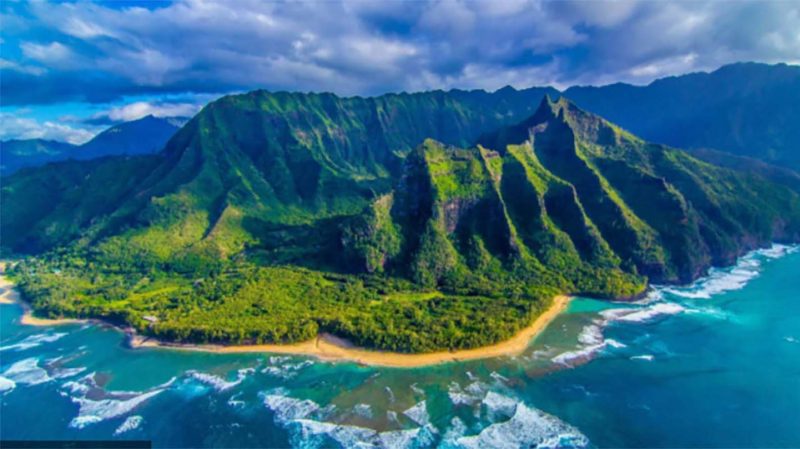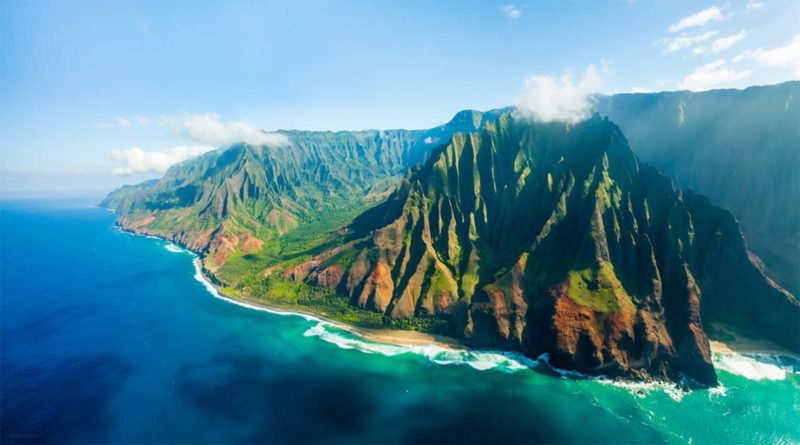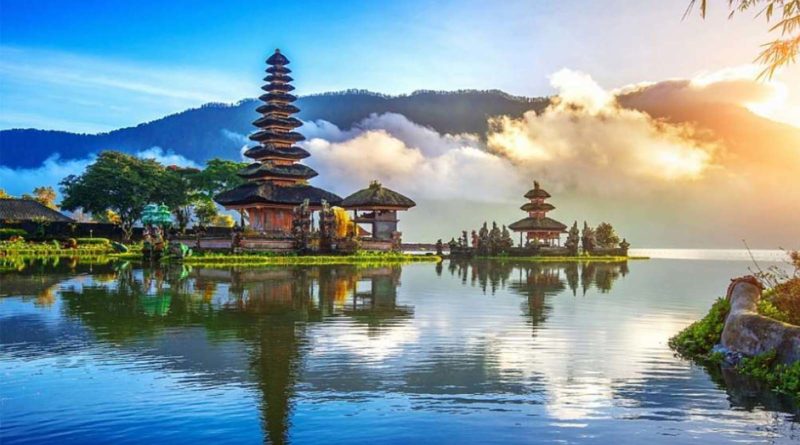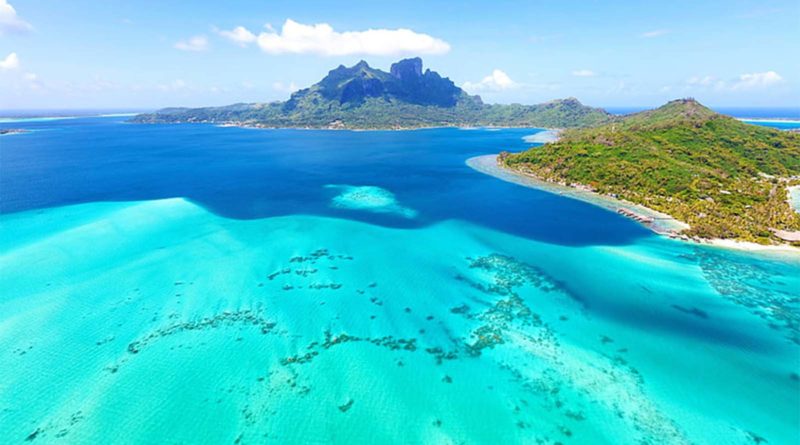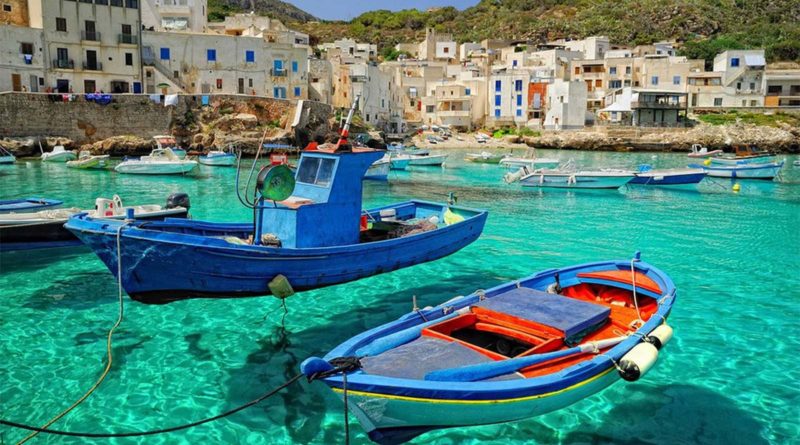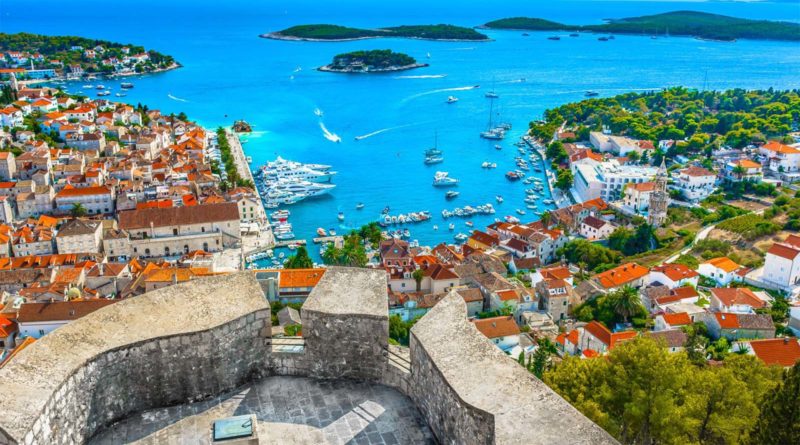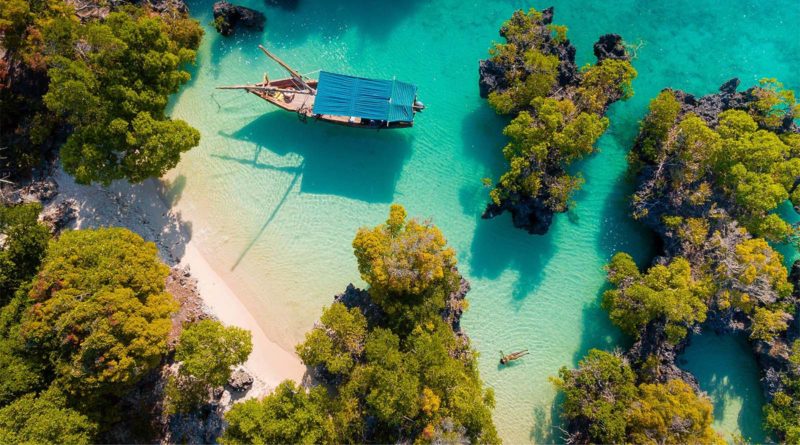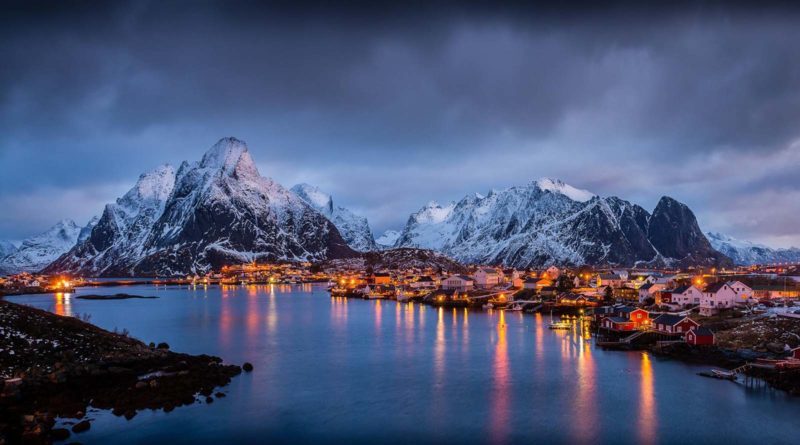(Italian and English version)
MARZO IN THE WORLD – TOP 10: 10 templi più belli del mondo
Bentornati con l’appuntamento della nostra rubrica TOP 10 che vi propone le curiosità, le bellezze, le particolarità, le eccellenze del nostro meraviglioso mondo. In questa puntata ci siamo divertiti ad andare alla ricerca del 10 templi più belli del mondo, simbolo del legame tra l’uomo e l’Assoluto. Curiosi di sapere quali sono?
1.Tempio Bianco (Chiang Rai – Thailandia)
Quando lo abbiamo visto, siamo rimasti senza fiato. Per questo ci sentiamo di piazzarlo al primo posto della TOP 10 di questa settimana. Pole position per il Tempio Bianco di Chiang Rai, in Thailandia, un luogo di culto del Buddhismo Theravada recentissimo. È stato costruito, infatti, nel 1997 ed è stato realizzato completamente in gesso bianco e specchietti che riflettono la luce del sole creando riflessi quasi irreali. Il bianco, infatti, vuole rappresentare la purezza del Buddha. Ma è l’allegoria e il simbolismo che qui sembra prendere vita nelle statue e nei bassorilievi a lasciare stupefatti.

Prime fra tutte le decine di mani scolpite che accolgono il visitatore mentre attraversa il ponte che conduce all’ingresso del tempio e che spuntano da una vasca circolare. Simboleggiano il desiderio che, secondo il buddhismo, è la fonte della sofferenza. L’ingresso, poi, simboleggia il passaggio dal mondo delle tentazioni al Nirvana.

Il percorso è accompagnato da statue di creature mostruose, ma anche di Yama, il dio della morte, e Rahu, il dio dell’oscurità, che hanno il compito di accettare o respingere l’anima umana accogliendola nel Nirvana o condannandola a un’altra reincarnazione. L’interno, tuttavia, è una vera sorpresa. Sì, perché oltre ai dipinti murali con scene tradizionali del buddismo, si trovano anche scene apocalittiche del mondo moderno, come l’attentato alle Torri Gemelle. E non mancano nemmeno alcune rappresentazioni dei cartoni animati, supereroi e personaggi famosi, tra cui Elvis Presley e Michael Jackson.
2.Tempio sospeso (Datong – Cina)
Costruito nel 491 d.C, è l’unico tempio in Cina a essere dedicato a tre religioni diverse, il Buddhismo, il Confucianesimo e il Taoismo, nello stesso luogo. A 50 metri dal suolo! Questo meraviglioso prodigio dell’ingegno umano è dotato di 40 spazi tra padiglioni, pagode e sale e sembra fluttuare nell’aria. Ma è talmente stabile che, in origine, fu costruito senza i “pali” che oggi si vedono e che furono aggiunti successivamente per “fare coraggio” a fedeli e visitatori, che non si attentavano a salire per paura che il tempio crollasse sotto i loro piedi!
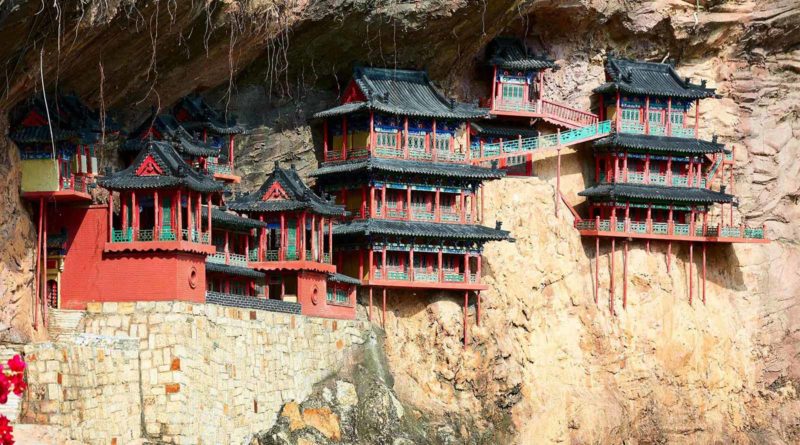
Invece, il tempio è, oggi come allora, stabilissimo e i pali possono essere tolti all’occorrenza. Per raggiungere il tempio sospeso si percorre un ponte che porta a una scalinata intagliata nella roccia. I sei ambienti principali sono collegati da un dedalo di corridoi, ponti e sentieri che offrono una vista mozzafiato.
3.Tempio di Abu Simbel (Assuan – Egitto)
Terza posizione per il Tempio di Abu Simbel, forse il più bello dell’Antico Egitto. Fu costruito nel XIII secolo a.C da Ramesse II per celebrare la vittoria nella Battaglia di Qadesh e per mostrare la sua grandezza e potenza ai Nubiani. Il complesso è formato da due imponenti tempi ricavati dalla roccia della montagna ed è decorato, sull’enorme facciata alta 33 metri e larga 38, con quattro statue del faraone alte 20 metri e, ai lati di queste, due statue più piccole di donne, la madre del sovrano, Tuya, e l’amatissima moglie Nefertari che, secondo la leggenda, sarebbe morta all’ingresso del grande tempio.
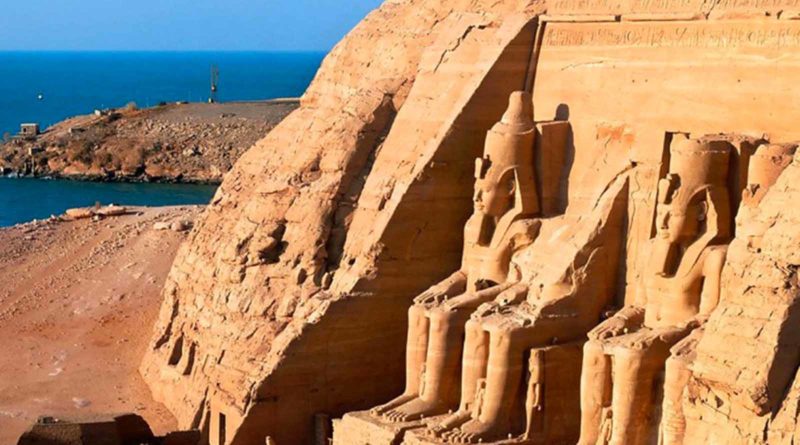
Al tempio di Abu Simbel è legata anche la storia del suo stupefacente salvataggio. Quando, infatti, nel 1960 il presidente Nasser diede inizio ai lavori per la costruzione della Diga di Assuan che prevedeva la formazione di un bacino artificiale, che avrebbe sommerso il tempio. Grazie all’intervento dell’UNESCO, 113 paesi del mondo si attivarono per salvare il monumento.

Un progetto svedese, rivelatosi vincente, prevedeva di tagliare, numerare e smontare blocco per blocco la parte scolpita della collina e ricostruire il tempio 65 metri più in alto e 300 metri più indietro rispetto al bacino. I lavori durarono dal 1964 al 1968 e vi lavorarono 2000 uomini. Furono spesi 40 milioni di dollari.
4.Tempio di Borobudur (Giava – Indonesia)
Costruito tra il 750 e l’830 a.C il Tempio di Borobudur, si trova a Giava, in Indonesia, ed è uno dei più conosciuti e affascinanti del mondo. Le sue dimensioni sono colossali. Misura, infatti, 123 metri x 123 di base, 35 di altezza e appoggio su 1,6 milioni di enormi blocchi di pietra. Le sue pareti, poi, sono ricoperte da 2672 bassorilievi. Luogo di culto del Buddhismo Mahāyāna, è stato costruito senza lasciare nulla al caso.

Il posto in cui sorge si trova alla confluenza con due fiumi che ricorda quella del Gange e dello Yumna, mentre la catena montuosa richiama l’Himalaya. Il tempio si compone di 10 terrazze, corrispondenti alle 10 fasi del cammino spirituale verso la perfezione, divise in tre gruppi, che rappresentano i tre regni del Samsara. Lungo il cammino si incontrano nicchie con all’interno statue di Buddha. A mano a mano che si prosegue, si arriva alla sommità, simbolo del Nirvana.

5.Tempio d’Oro (Amritsar – India)
È il tempio più sacro della religione Sikh ed è stato costruito nel 1588. I fedeli hanno l’obbligo di recarvisi in pellegrinaggio almeno una volta nella vita, ma per la sua bellezza è diventata un’attrazione turistica a livello mondiale. Chiunque può entrare nel tempio da una delle sue quattro entrate, che simboleggiano l’apertura e l’accettazione, indipendentemente dalla fede e dalla religione professata, dal sesso o dalla nazionalità.

Basta, tuttavia, che mentre si è all’interno del tempio non di fumi, non si beva alcol, non si mangi carne o si assumano droghe. Inoltre, tutti devono coprirsi il capo in segno di rispetto e lavarsi i piedi nel lago sacro che circonda il tempio. Sontuoso fino all’inverosimile, il tempio deve le sue parti in ora e in marmo pregiato al Maharajà Ranjit Singh, che donò le sue ricchezze per farlo costruire.
6. Monastero di Taktsang (Paro – Buthan)
Il Monasteto di Taktsang è un complesso di templi costruito nel 1692 su un picco montuoso nella valle di Paro, in Buthan. È noto anche come Tana della Tigre per una leggenda secondo la quale il tempio è stato fondato nel luogo dove, nel VIII secolo, il guru Padmasambhaya arrivò qui dal Tibet sul dorso di una tigre sacra per poi rimanere in meditazione per tre mesi nella grotta di Tanksang Senge Samdup. Una variante della leggenda vuole che la tigre in realtà fosse la moglie di un imperatore, discepola del guru, che si trasformò in fiera per portare il suo maestro in questo luogo e portare così il buddhismo in Buthan.

Il monastero si trova a 3120 metri di altezza, a picco su un precipizio, ma vi si accede attraverso un sentiero nella foresta, da una mulattiera e dal sentiero “delle mille fate” che attraversa un plateau roccioso. Si compone di quattro templi principali e da costruzioni residenziali, oltre che da otto caverne, tra cui quella sacra in cui entrò per primo il guru Padmasambhaya.
7. Angkor Wat (Siem Reap – Cambogia)
Il complesso di Angkor Wat sorge a 5,5 km da Siem Reap, ed è considerato oggi il più grande monumento religioso del mondo. La sua costruzione, su impulso del re Suryavarman II ha richiesto 40 anni, al 1112 al 1152 d.C. Originariamente concepito come tempio indù, verso la fine del XII secolo è stato convertito a luogo di culto buddista.

Il complesso, che in lingua khmer significa “Tempio della città”, è costruito secondo il concetto di “tempio montagna” e si erge all’interno di un fossato, e simboleggia il Monte Meru, l’Olimpo dell’Induismo ed è circondato da altri templi a galleria. L’edificio principale ha la forma di un rettangolo lunga 1,5 km da ovest a est e 1,3 km da nord a sud. All’interno del fossato che circonda completamente il muro di 5,6 km si trovano tre gallerie rettangolari, una sopra l’altra.

Al centro del tempio svettano cinque torri. Si pensa che, in origine, dovesse essere il mausoleo del re. Splendidi e famosissimi anche i suoi bassorilievi e i devata che adornano le pareti, ma anche il modo in cui la natura, nel tempo, si è appropriata di questi spazi.
8. Uluwatu (Bali – Indonesia)
Pura Uluwatu è un tempio che sorge dove mai si penserebbe possibile. Si trova infatti in bilico su una scogliera rocciosa alta 70 metri a picco sul mare, nell’isola di Bali, in Indonesia ed è dedicato alla dea dell’acqua, di cui le rocce non sarebbero che la sua imbarcazione pietrificata. Il tempio fu fondato nel XI secolo dal saggio giavanese Mpu Kuturan e ristrutturato nel XVI secolo. Per raggiungere il tempio, luogo di culto dell’induismo, si deve salire una scalinata a strapiombo sul mare.

Si entra poi da un portale di pietra finemente intagliato, che conduce a un grande spazio centrale. Subito a sinistra si trovano alcuni santuari dedicati a Nirartha, mentre al centro si trova un altro portale di pietra che simboleggia il Monte Meru, la montagna sacra induista. Attraversandolo, si arriva alla parte più interna del tempio. Sul portale spiccano tre pinnacoli e una testa di demone, che ha la funzione si spaventare gli spiriti maligni, mentre ai piedi si trova una statua di Ganesh. Splendida la zona circostante, abitata da scimmie dispettose. Il panorama, poi, è davvero mozzafiato.
9. Wat Pho (Bangkok – Thailandia)
Sorge nel centro di Bangkok ed è considerato uno dei templi più belli del mondo. Costruito nel XVII secolo, è un luogo di culto buddista, noto soprattutto per la sua meravigliosa statua del Buddha Sdraiato e per i Phra Mhaha Chedi presenti nei cortili, decorati con preziose ceramiche cinesi. Nel 1788 è stato oggetto di un’importante ristrutturazione durante il regno di Rama I e ulteriormente ampliato durante il regno di Rama III. In quest’ultima occasione sono state aggiunte 1360 targhe con testi di medicina tradizionale e insegnamenti buddisti, dichiarate dall’UNESCO Patrimonio dell’Umanità nel 2008. Con i suoi 80 mila mq è uno dei templi più grandi e antichi di Bangkok.

Nel complesso sono conservate, poi, più di mille immagini e statue di Buddha. La più famosa, quella del Buddha Sdraiato, si trova all’estremità nord, vicino all’ingresso del pubblico. Si tratta di un colosso lungo 46 metri e alto 15 con il corpo rivestito d’oro, mentre gli occhi e i piedi sono decorati con madreperla. Sulle piante dei piedi sono raffigurate 108 scene abbellite con conchiglie, secondo lo stile cinese e indiano. Inoltre, all’interno del complesso, nel 1955 è stata fondata una scuola di massaggio thai e medicina tradizionale che, ancora oggi, è la più rinomata di tutta la Thailandia.
10. Tempio delle Grotte di Batu (Selangor – Malaysia)
Non solo uno dei templi più particolari del mondo, ma anche uno dei santuari indù più famosi al di fuori dell’India. Il Tempio delle Grotte di Batu si trova all’interno di una cavità carsica nei dintorni di Kuala Lumpur, in Malesia ed è dedicato a Murugan, dio della guerra, la cui statua dorata, alta 42,7 metri, accoglie i visitatori all’ingresso del tempio ed è la più alta del mondo dedicata a questa divinità. Le grotte furono scoperte per caso nel 1860 da alcuni contadini, ma divenne famosa solo nel 1878, quando ne fu ufficialmente svelata l’ubicazione.
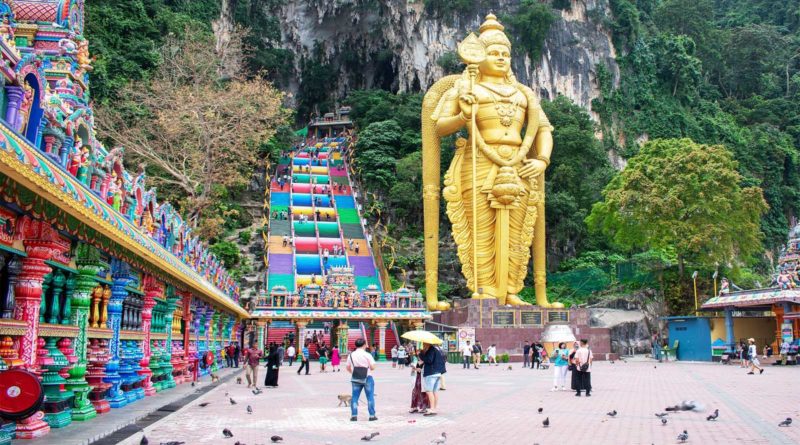
Il complesso è formato da tre grotte principali e tre più piccole. La più grande è la Temple Cave, che presenta un soffitto a volte e diversi santuari. Per raggiungere la grotta bisogna salire ben 272 scalini. Alla base della collina si trovano poi due templi rupestri, ornati con statue e dipinti che raffigurano episodi della vita del dio. Nelle grotte si trovano diversi animali rari, tra cui ragni e pipistrelli della frutta. Il sito è famoso per la nutrita presenza di una colonia di macachi.
 FOR ENGLISH VERSION CLICK ON NEXT PAGE >>Welcome back with the appointment of our TOP 10 column that every week proposes the curiosities, beauties, peculiarities, excellences of our wonderful world. In this episode, we had fun searching for the 10 most beautiful temples in the world, symbols of the link between man and the Absolute. Curious to know which are they?
FOR ENGLISH VERSION CLICK ON NEXT PAGE >>Welcome back with the appointment of our TOP 10 column that every week proposes the curiosities, beauties, peculiarities, excellences of our wonderful world. In this episode, we had fun searching for the 10 most beautiful temples in the world, symbols of the link between man and the Absolute. Curious to know which are they?
1. White Temple (Chiang Rai – Thailand)
When we saw it, we were breathless. That’s why we place it first in this week’s TOP 10. Pole position for the White Temple in Chiang Rai, Thailand, a very recent Theravada Buddhist place of worship. It was built, in fact, in 1997 and is made entirely of white plaster and mirrors that reflect the sunlight creating almost unreal reflections. The white, in fact, is meant to represent the purity of the Buddha. But it is the allegory and symbolism that seems to come alive here in the statues and bas-reliefs that leave one astonished. First and foremost are the dozens of sculpted hands that greet the visitor as he crosses the bridge leading to the temple entrance and emerge from a circular pool. They symbolise desire which, according to Buddhism, is the source of suffering. The entrance then symbolises the passage from the world of temptation to Nirvana.
First and foremost are the dozens of sculpted hands that greet the visitor as he crosses the bridge leading to the temple entrance and emerge from a circular pool. They symbolise desire which, according to Buddhism, is the source of suffering. The entrance then symbolises the passage from the world of temptation to Nirvana. The path is accompanied by statues of monstrous creatures, but also of Yama, the god of death, and Rahu, the god of darkness, whose task it is to accept or reject the human soul by welcoming it into Nirvana or condemning it to another reincarnation. The interior, however, is a real surprise. Yes, because in addition to murals with traditional Buddhist scenes, there are also apocalyptic scenes from the modern world, such as the Twin Towers bombing. And there are also some cartoon depictions, superheroes and celebrities, including Elvis Presley and Michael Jackson.
The path is accompanied by statues of monstrous creatures, but also of Yama, the god of death, and Rahu, the god of darkness, whose task it is to accept or reject the human soul by welcoming it into Nirvana or condemning it to another reincarnation. The interior, however, is a real surprise. Yes, because in addition to murals with traditional Buddhist scenes, there are also apocalyptic scenes from the modern world, such as the Twin Towers bombing. And there are also some cartoon depictions, superheroes and celebrities, including Elvis Presley and Michael Jackson.
2. Suspended Temple (Datong – China)
Built in 491 AD, it is the only temple in China to be dedicated to three different religions, Buddhism, Confucianism and Taoism, in the same place. 50 metres above the ground! This marvellous marvel of human ingenuity has 40 spaces between pavilions, pagodas and halls and seems to float in the air. But it is so stable that, originally, it was built without the ‘poles’ that can be seen today and that were added later to ‘give courage’ to worshippers and visitors, who did not care to climb for fear that the temple would collapse under their feet! Instead, the temple is, today as then, very stable and the poles can be removed if necessary. To reach the suspended temple, one crosses a bridge that leads to a staircase carved into the rock. The six main rooms are connected by a maze of corridors, bridges and paths offering breathtaking views.
Instead, the temple is, today as then, very stable and the poles can be removed if necessary. To reach the suspended temple, one crosses a bridge that leads to a staircase carved into the rock. The six main rooms are connected by a maze of corridors, bridges and paths offering breathtaking views.
3. Temple of Abu Simbel (Aswan – Egypt)
Third position for the Temple of Abu Simbel, perhaps the most beautiful temple in Ancient Egypt. It was built in the 13th century B.C. by Ramesses II to celebrate his victory at the Battle of Qadesh and to show his greatness and power to the Nubians. The complex consists of two imposing temples carved out of the rock of the mountain and is decorated, on the enormous 33-metre high and 38-metre wide façade, with four 20-metre high statues of the pharaoh and, on either side of these, two smaller statues of women, the sovereign’s mother, Tuya, and his beloved wife Nefertari, who, according to legend, died at the entrance to the great temple. The temple of Abu Simbel is also linked to the story of its astonishing rescue. When, in 1960, President Nasser started work on the construction of the Aswan Dam, which envisaged the formation of an artificial basin, which would have submerged the temple. Thanks to UNESCO’s intervention, 113 countries around the world took action to save the monument.
The temple of Abu Simbel is also linked to the story of its astonishing rescue. When, in 1960, President Nasser started work on the construction of the Aswan Dam, which envisaged the formation of an artificial basin, which would have submerged the temple. Thanks to UNESCO’s intervention, 113 countries around the world took action to save the monument. A Swedish project, which proved successful, planned to cut, number and dismantle block by block the sculpted part of the hill and rebuild the temple 65 metres higher and 300 metres further back from the reservoir. The work lasted from 1964 to 1968 and 2000 men worked on it. Forty million dollars were spent.
A Swedish project, which proved successful, planned to cut, number and dismantle block by block the sculpted part of the hill and rebuild the temple 65 metres higher and 300 metres further back from the reservoir. The work lasted from 1964 to 1968 and 2000 men worked on it. Forty million dollars were spent.
4. Borobudur Temple (Java – Indonesia)
Built between 750 and 830 B.C., the Borobudur Temple is located in Java, Indonesia, and is one of the best known and most fascinating in the world. Its dimensions are colossal. It measures, in fact, 123 metres x 123 in base, 35 in height and rests on 1.6 million enormous stone blocks. Its walls are covered with 2672 bas-reliefs. A place of worship of Mahāyāna Buddhism, it was built leaving nothing to chance. Its location is at the confluence of two rivers, reminiscent of the Ganges and the Yumna, while the mountain range recalls the Himalayas. The temple consists of 10 terraces, corresponding to the 10 stages of the spiritual path to perfection, divided into three groups, representing the three realms of Samsara. Along the way, one encounters niches with statues of Buddha inside. As you continue, you reach the summit, symbol of Nirvana.
Its location is at the confluence of two rivers, reminiscent of the Ganges and the Yumna, while the mountain range recalls the Himalayas. The temple consists of 10 terraces, corresponding to the 10 stages of the spiritual path to perfection, divided into three groups, representing the three realms of Samsara. Along the way, one encounters niches with statues of Buddha inside. As you continue, you reach the summit, symbol of Nirvana.
5. Golden Temple (Amritsar – India)
It is the holiest temple of the Sikh religion and was built in 1588. The faithful are obliged to go there on pilgrimage at least once in their lives, but because of its beauty it has become a worldwide tourist attraction. Anyone can enter the temple from one of its four entrances, which symbolise openness and acceptance, regardless of professed faith and religion, gender or nationality. It is sufficient, however, that while inside the temple one does not smoke, drink alcohol, eat meat or take drugs. Furthermore, everyone must cover their heads as a sign of respect and wash their feet in the sacred lake that surrounds the temple. Sumptuous to the point of improbability, the temple owes its parts in gold and precious marble to Maharaja Ranjit Singh, who donated his wealth to build it.
It is sufficient, however, that while inside the temple one does not smoke, drink alcohol, eat meat or take drugs. Furthermore, everyone must cover their heads as a sign of respect and wash their feet in the sacred lake that surrounds the temple. Sumptuous to the point of improbability, the temple owes its parts in gold and precious marble to Maharaja Ranjit Singh, who donated his wealth to build it.
6. Taktsang Monastery (Paro – Buthan)
The Taktsang Monastery is a temple complex built in 1692 on a mountain peak in the Paro Valley in Buthan. It is also known as the Tiger’s Den because of a legend that the temple was founded on the site where, in the 8th century, Guru Padmasambhaya arrived here from Tibet on the back of a sacred tiger and then meditated for three months in the cave of Tanksang Senge Samdup. A variant of the legend has it that the tiger was actually an emperor’s wife, a disciple of the guru, who turned herself into a fair to bring her master to this place and thus bring Buddhism to Bhutan. The monastery is located at an altitude of 3120 metres, overlooking a precipice, but is accessed via a forest path, a mule track and the ‘Thousand Fairies’ path that crosses a rocky plateau. It consists of four main temples and residential buildings, as well as eight caves, including the sacred one into which Guru Padmasambhaya first entered.
The monastery is located at an altitude of 3120 metres, overlooking a precipice, but is accessed via a forest path, a mule track and the ‘Thousand Fairies’ path that crosses a rocky plateau. It consists of four main temples and residential buildings, as well as eight caves, including the sacred one into which Guru Padmasambhaya first entered.
7. Angkor Wat (Siem Reap – Cambodia)
The Angkor Wat complex stands 5.5 km from Siem Reap, and is considered the largest religious monument in the world today. Its construction at the instigation of King Suryavarman II took 40 years, from 1112 to 1152 AD. Originally conceived as a Hindu temple, it was converted to a Buddhist place of worship towards the end of the 12th century. The complex, which means ‘City Temple’ in the Khmer language, is built according to the ‘temple mountain’ concept and stands within a moat, symbolising Mount Meru, the Olympus of Hinduism, and is surrounded by other gallery temples. The main building has the shape of a rectangle 1.5 km long from west to east and 1.3 km from north to south. Inside the moat that completely surrounds the 5.6 km wall are three rectangular galleries, one above the other.
The complex, which means ‘City Temple’ in the Khmer language, is built according to the ‘temple mountain’ concept and stands within a moat, symbolising Mount Meru, the Olympus of Hinduism, and is surrounded by other gallery temples. The main building has the shape of a rectangle 1.5 km long from west to east and 1.3 km from north to south. Inside the moat that completely surrounds the 5.6 km wall are three rectangular galleries, one above the other. In the centre of the temple stand five towers. It is thought to have originally been the king’s mausoleum. Its bas-reliefs and devatas adorning the walls are also splendid and famous, as is the way nature has appropriated these spaces over time.
In the centre of the temple stand five towers. It is thought to have originally been the king’s mausoleum. Its bas-reliefs and devatas adorning the walls are also splendid and famous, as is the way nature has appropriated these spaces over time.
8. Uluwatu (Bali – Indonesia)
Pura Uluwatu is a temple that stands where one would never think possible. In fact, it stands poised on a 70-metre high rocky cliff overlooking the sea on the island of Bali, Indonesia and is dedicated to the goddess of water, of which the rocks would be nothing but her petrified vessel. The temple was founded in the 11th century by the Javanese sage Mpu Kuturan and renovated in the 16th century. To reach the temple, a place of Hindu worship, one has to climb a flight of steps overhanging the sea. One then enters through a finely carved stone portal, which leads to a large central space. Immediately to the left are several shrines dedicated to Nirartha, while in the centre is another stone portal symbolising Mount Meru, the Hindu sacred mountain. Passing through it, one arrives at the innermost part of the temple. On the portal stand three pinnacles and a demon’s head, which is meant to scare away evil spirits, while at the foot is a statue of Ganesh. The surrounding area, inhabited by mischievous monkeys, is splendid. The view, then, is truly breathtaking.
One then enters through a finely carved stone portal, which leads to a large central space. Immediately to the left are several shrines dedicated to Nirartha, while in the centre is another stone portal symbolising Mount Meru, the Hindu sacred mountain. Passing through it, one arrives at the innermost part of the temple. On the portal stand three pinnacles and a demon’s head, which is meant to scare away evil spirits, while at the foot is a statue of Ganesh. The surrounding area, inhabited by mischievous monkeys, is splendid. The view, then, is truly breathtaking.
9. Wat Pho (Bangkok – Thailand)
It stands in the centre of Bangkok and is considered one of the most beautiful temples in the world. Built in the 17th century, it is a Buddhist place of worship, best known for its wonderful statue of the Reclining Buddha and the Phra Mhaha Chedi in the courtyards, decorated with precious Chinese ceramics. In 1788, it underwent a major renovation during the reign of Rama I and was further extended during the reign of Rama III. On the latter occasion, 1360 plaques with texts on traditional medicine and Buddhist teachings were added and declared a UNESCO World Heritage Site in 2008. At 80,000 square metres, it is one of the largest and oldest temples in Bangkok. More than a thousand Buddha images and statues are preserved in the complex. The most famous, that of the Lying Buddha, is located at the north end, near the public entrance. It is a 46-metre long and 15-metre high colossus with a body covered in gold, while the eyes and feet are decorated with mother-of-pearl. On the soles of the feet are 108 scenes decorated with shells, in the Chinese and Indian style. In addition, a school of Thai massage and traditional medicine was founded within the complex in 1955 and is still the most renowned in Thailand.
More than a thousand Buddha images and statues are preserved in the complex. The most famous, that of the Lying Buddha, is located at the north end, near the public entrance. It is a 46-metre long and 15-metre high colossus with a body covered in gold, while the eyes and feet are decorated with mother-of-pearl. On the soles of the feet are 108 scenes decorated with shells, in the Chinese and Indian style. In addition, a school of Thai massage and traditional medicine was founded within the complex in 1955 and is still the most renowned in Thailand.
10. Batu Cave Temple (Selangor – Malaysia)
Not only one of the most unique temples in the world, but also one of the most famous Hindu shrines outside India. The Batu Caves Temple is located inside a karstic cavity on the outskirts of Kuala Lumpur, Malaysia and is dedicated to Murugan, god of war, whose 42.7 metre high golden statue welcomes visitors at the temple entrance and is the tallest in the world dedicated to this deity. The caves were discovered by chance in 1860 by some farmers, but only became famous in 1878, when their location was officially revealed. The complex consists of three main caves and three smaller ones. The largest is Temple Cave, which features a vaulted ceiling and several shrines. To reach the cave, one has to climb 272 steps. At the base of the hill are two rock temples, adorned with statues and paintings depicting episodes from the life of the god. The caves are home to several rare animals, including spiders and fruit bats. The site is famous for a large colony of macaques.
The complex consists of three main caves and three smaller ones. The largest is Temple Cave, which features a vaulted ceiling and several shrines. To reach the cave, one has to climb 272 steps. At the base of the hill are two rock temples, adorned with statues and paintings depicting episodes from the life of the god. The caves are home to several rare animals, including spiders and fruit bats. The site is famous for a large colony of macaques.
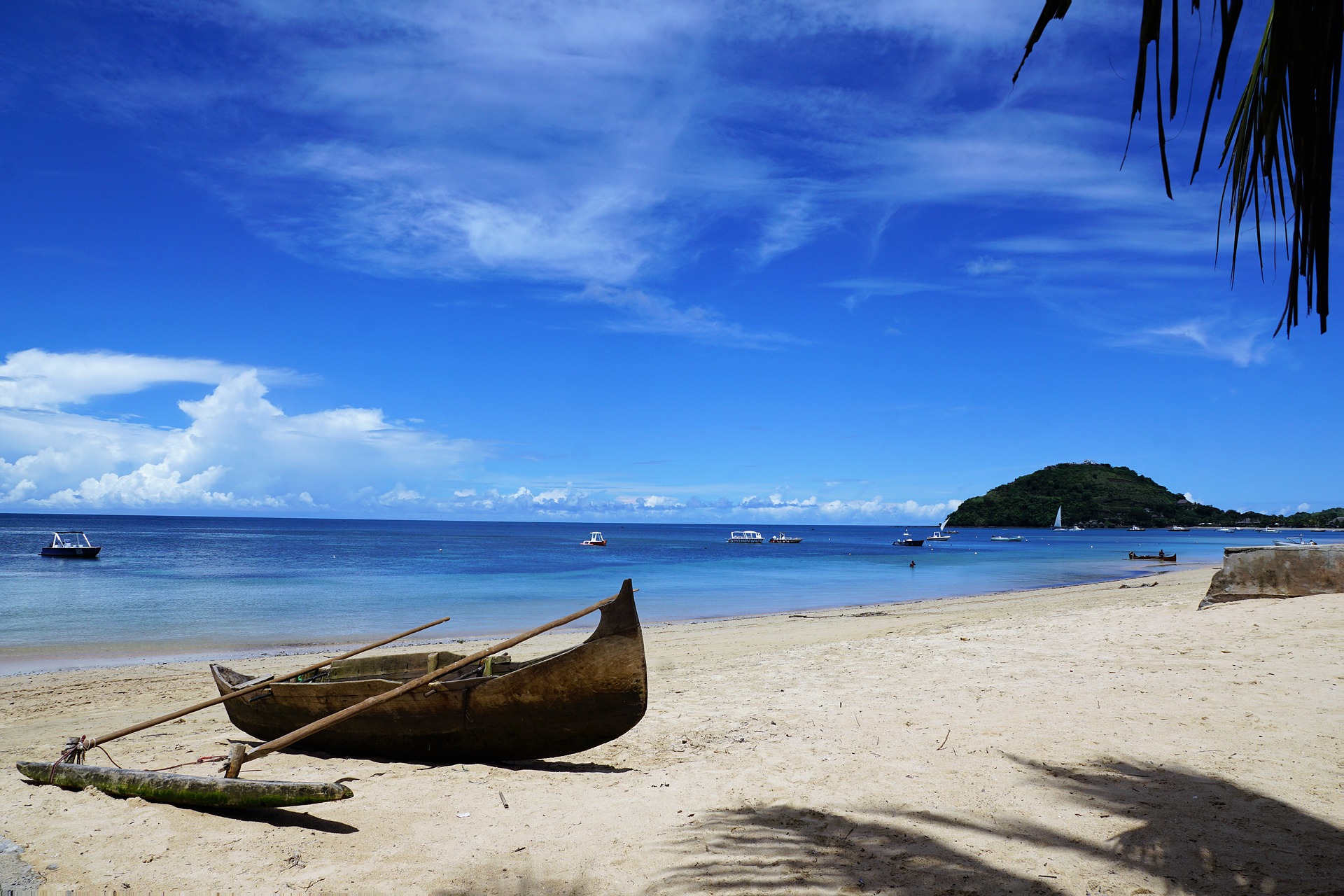
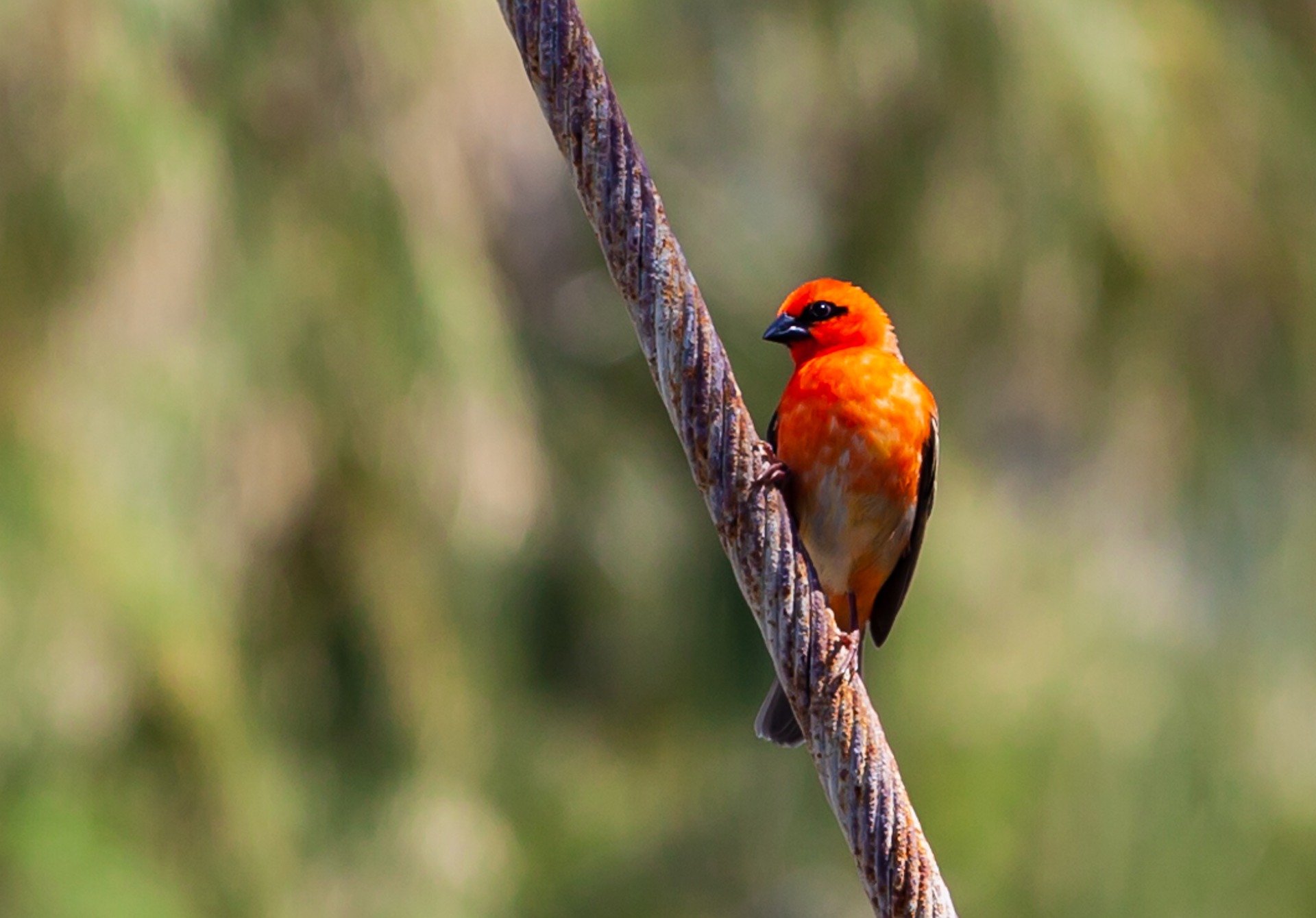

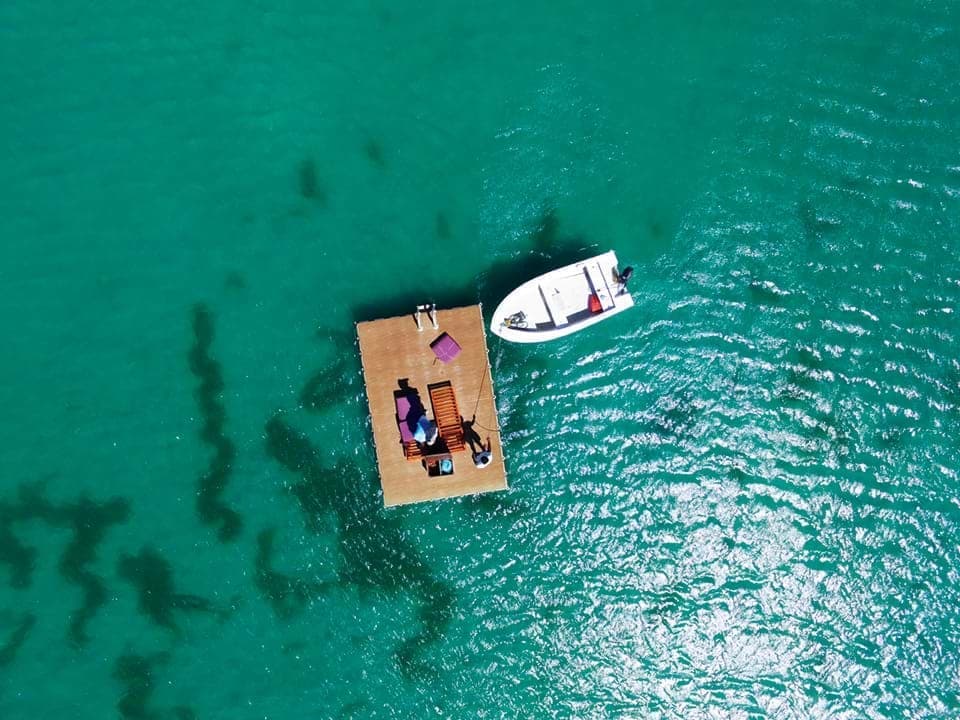
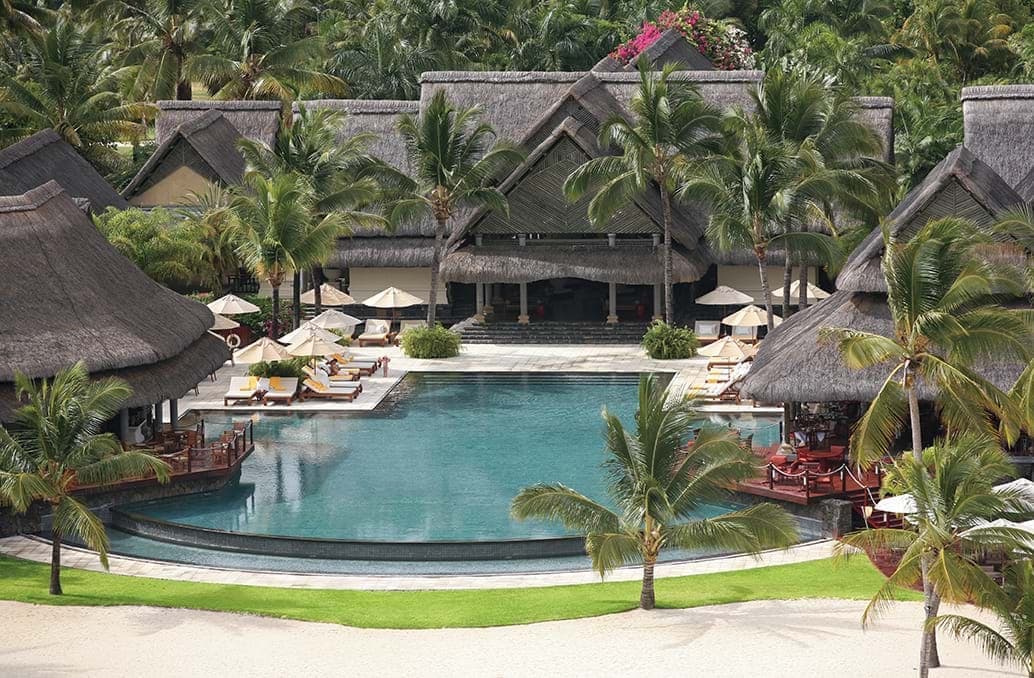
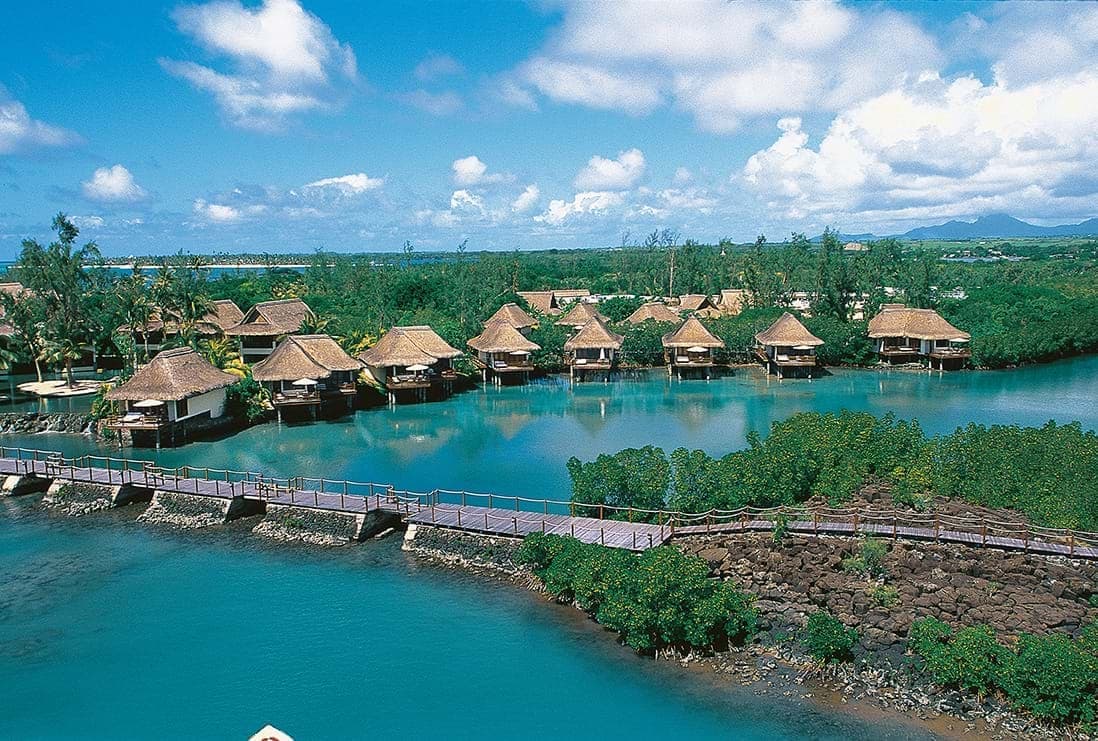
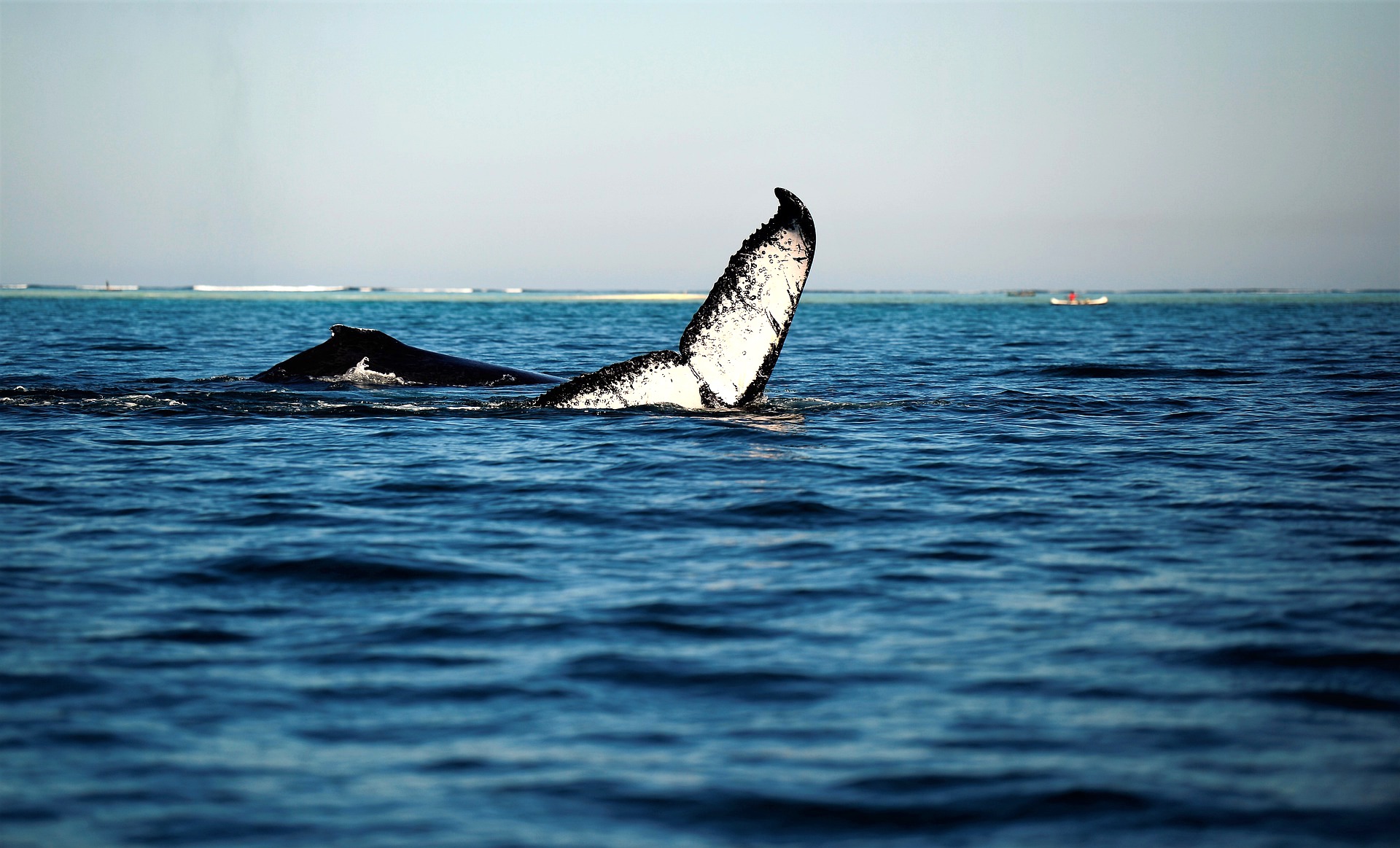
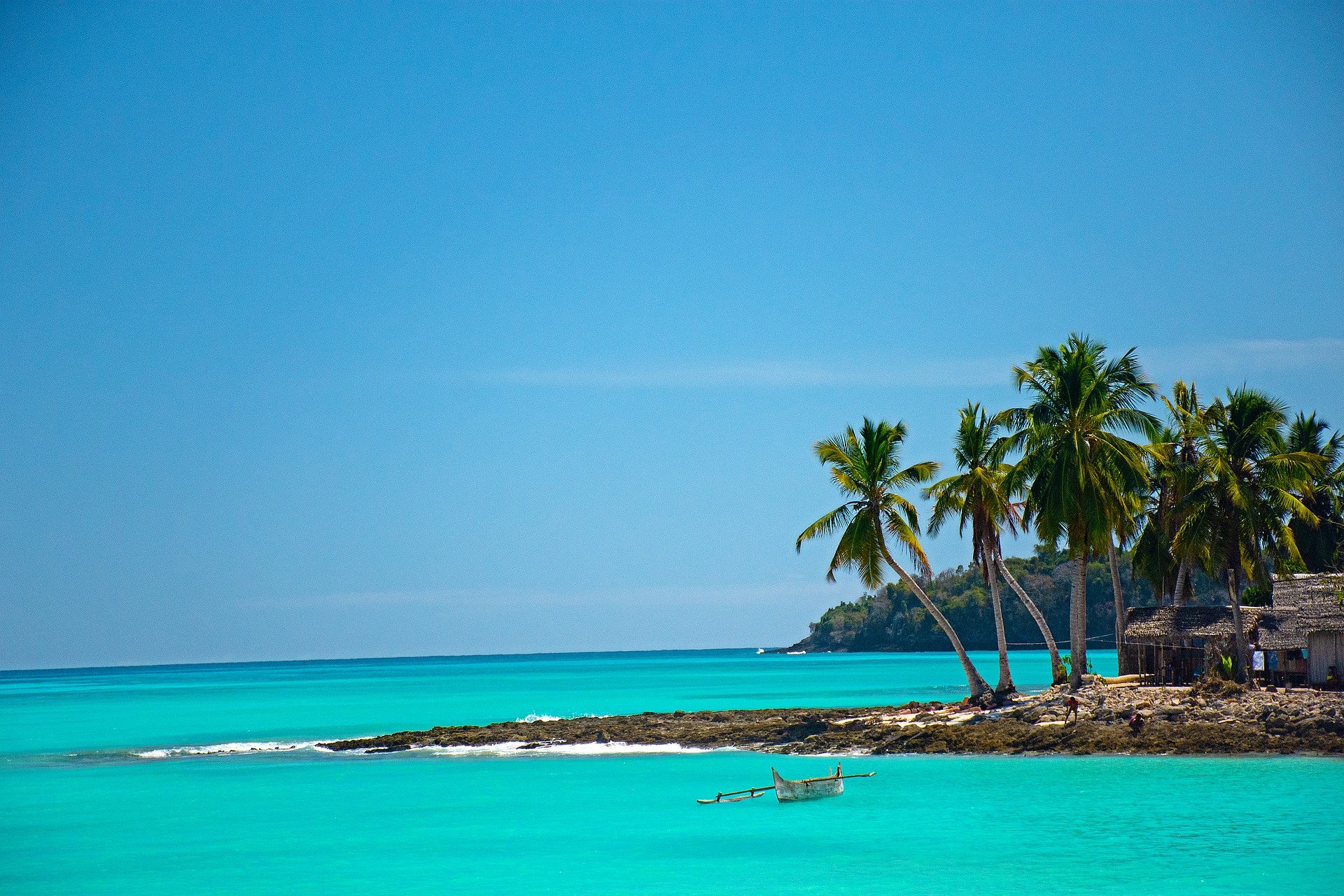


 CLICK IN THE NEXT PAGE FOR ENGLISH VERSION >>Tsarabanjina is the largest of the islands that make up the Mitsio Archipelago, located in the north-western part of Madagascar, about 70 km from Nosy Be.
CLICK IN THE NEXT PAGE FOR ENGLISH VERSION >>Tsarabanjina is the largest of the islands that make up the Mitsio Archipelago, located in the north-western part of Madagascar, about 70 km from Nosy Be. Translated from the Sakalava language Tsarabanjina means ‘the island with the beautiful beach.Nothing could be truer because, in addition to lush nature, it boasts a beautiful white sandy shore.
Translated from the Sakalava language Tsarabanjina means ‘the island with the beautiful beach.Nothing could be truer because, in addition to lush nature, it boasts a beautiful white sandy shore. In fact, the island is a true piece of paradise, a strip of land just 22 hectares in size that is entirely devoted to eco-sustainability where nature itself regulates life.
In fact, the island is a true piece of paradise, a strip of land just 22 hectares in size that is entirely devoted to eco-sustainability where nature itself regulates life. Tsarabanjina offers a unique biodiversity and a natural environment consisting of a tangle of vegetation and small hills.The only accommodation in Tsarabanjina is the Constance Tsarabanjina resort, which offers accommodation in 25 wooden cottages surrounded by dense vegetation and distributed between the 270-metre northern beach and the 200-metre southern beach.
Tsarabanjina offers a unique biodiversity and a natural environment consisting of a tangle of vegetation and small hills.The only accommodation in Tsarabanjina is the Constance Tsarabanjina resort, which offers accommodation in 25 wooden cottages surrounded by dense vegetation and distributed between the 270-metre northern beach and the 200-metre southern beach. The cottages in the northern area are slightly elevated from the shoreline, which is reached by descending about ten steps; those in the southern area face directly onto the beach.
The cottages in the northern area are slightly elevated from the shoreline, which is reached by descending about ten steps; those in the southern area face directly onto the beach. The strong point of this resort is undoubtedly the location and the stretch of sea that surrounds it.But a note of credit is also due to the excellent cuisine, which features dishes with local, 0-km products.
The strong point of this resort is undoubtedly the location and the stretch of sea that surrounds it.But a note of credit is also due to the excellent cuisine, which features dishes with local, 0-km products. The resort is the ideal place for a honeymoon: tranquillity, relaxation, massages and a full calendar of activities.Among the free ones, for example, is snorkelling, offered with all the necessary equipment for unforgettable experiences.
The resort is the ideal place for a honeymoon: tranquillity, relaxation, massages and a full calendar of activities.Among the free ones, for example, is snorkelling, offered with all the necessary equipment for unforgettable experiences. In short, Tsarabanjina is a paradise, an exclusive place where dreams can come true.
In short, Tsarabanjina is a paradise, an exclusive place where dreams can come true. Have you ever thought of diving and bathing at night in the sea lit only by plankton that gives life to bioluminescence, surrounded by sea turtles?
Have you ever thought of diving and bathing at night in the sea lit only by plankton that gives life to bioluminescence, surrounded by sea turtles? The seabed then is spectacular and those who love snorkelling can admire the whale shark that lives here undisturbed and protected.On a catamaran or with a kayak, it is possible to spot various species of seabirds such as fish eagles, herons or moorhens.
The seabed then is spectacular and those who love snorkelling can admire the whale shark that lives here undisturbed and protected.On a catamaran or with a kayak, it is possible to spot various species of seabirds such as fish eagles, herons or moorhens. Excursions can also be made to the more mountainous part of the island. It only takes an hour to walk around Tsarabanjina.Another fascinating destination is the peninsula bordering the beach where, in a large cave surrounded by volcanic rocks, there is a Sakalava cemetery, where kings and notables were buried in large dugouts.This cemetery is still frequented by Sakalava people who go there to pray, bringing offerings, usually rum and honey.
Excursions can also be made to the more mountainous part of the island. It only takes an hour to walk around Tsarabanjina.Another fascinating destination is the peninsula bordering the beach where, in a large cave surrounded by volcanic rocks, there is a Sakalava cemetery, where kings and notables were buried in large dugouts.This cemetery is still frequented by Sakalava people who go there to pray, bringing offerings, usually rum and honey.

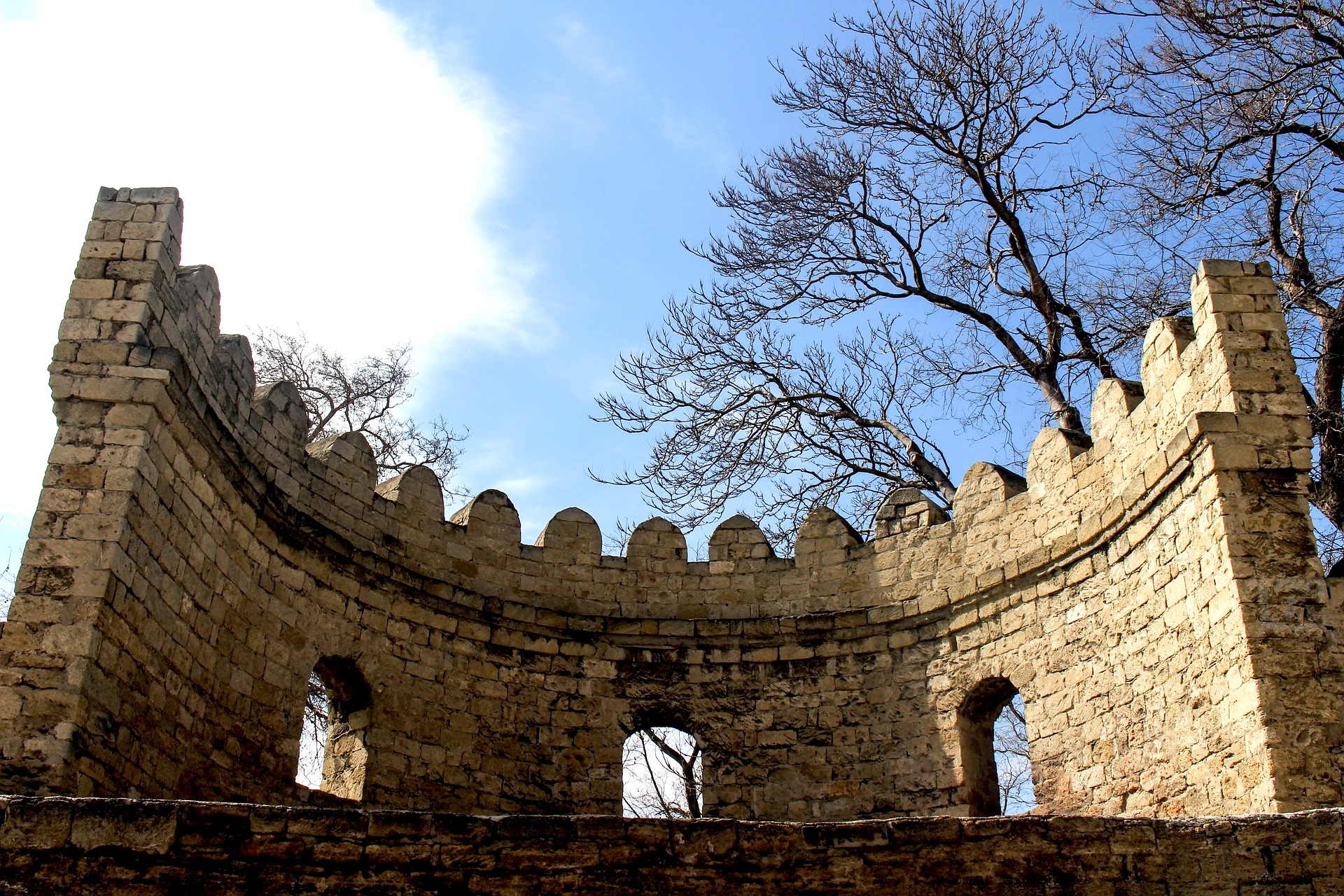



 FOR ENGLISH VERSION CLICK ON NEXT PAGE >>MARCH IN THE WORLD: BAKU, AZERBAIJANLittle known to tourists, Azerbaijan boasts an exceptional landscape and, above all, cultural heritage. Starting with an outstanding musical tradition that has become part of the lifestyle of this people. It is the Mugham, a musical genre recognised as an Oral and Intangible Heritage of Humanity.A former Soviet republic, Azerbaijan lies between Asia and Europe, is washed by the Caspian Sea, bordered by the Caucasus and is easily accessible from Italy, even by direct flights.
FOR ENGLISH VERSION CLICK ON NEXT PAGE >>MARCH IN THE WORLD: BAKU, AZERBAIJANLittle known to tourists, Azerbaijan boasts an exceptional landscape and, above all, cultural heritage. Starting with an outstanding musical tradition that has become part of the lifestyle of this people. It is the Mugham, a musical genre recognised as an Oral and Intangible Heritage of Humanity.A former Soviet republic, Azerbaijan lies between Asia and Europe, is washed by the Caspian Sea, bordered by the Caucasus and is easily accessible from Italy, even by direct flights.













 FOR ENGLISH VERSION CLICK ON NEXT PAGE >>Welcome back with the appointment of our TOP 10 column that every week proposes the curiosities, beauties, peculiarities, excellences of our wonderful world. In this episode, we had fun searching for the 10 most beautiful temples in the world, symbols of the link between man and the Absolute. Curious to know which are they?
FOR ENGLISH VERSION CLICK ON NEXT PAGE >>Welcome back with the appointment of our TOP 10 column that every week proposes the curiosities, beauties, peculiarities, excellences of our wonderful world. In this episode, we had fun searching for the 10 most beautiful temples in the world, symbols of the link between man and the Absolute. Curious to know which are they?